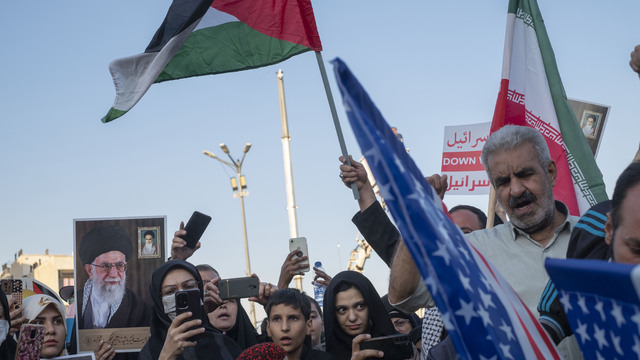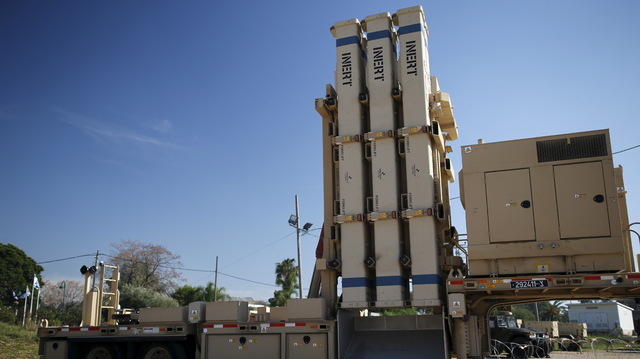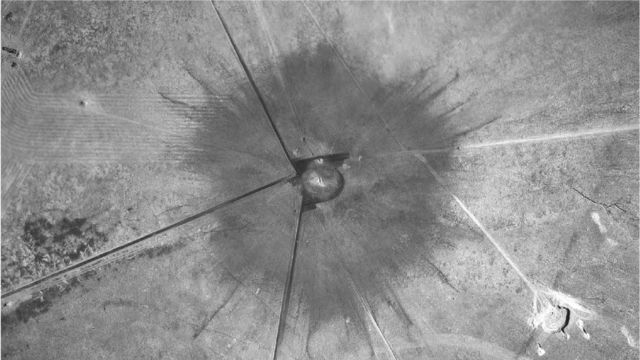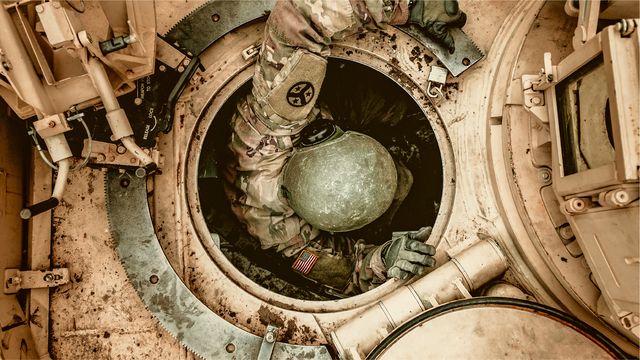The Importance of Verification and Transparency in the Nuclear-Arms Control
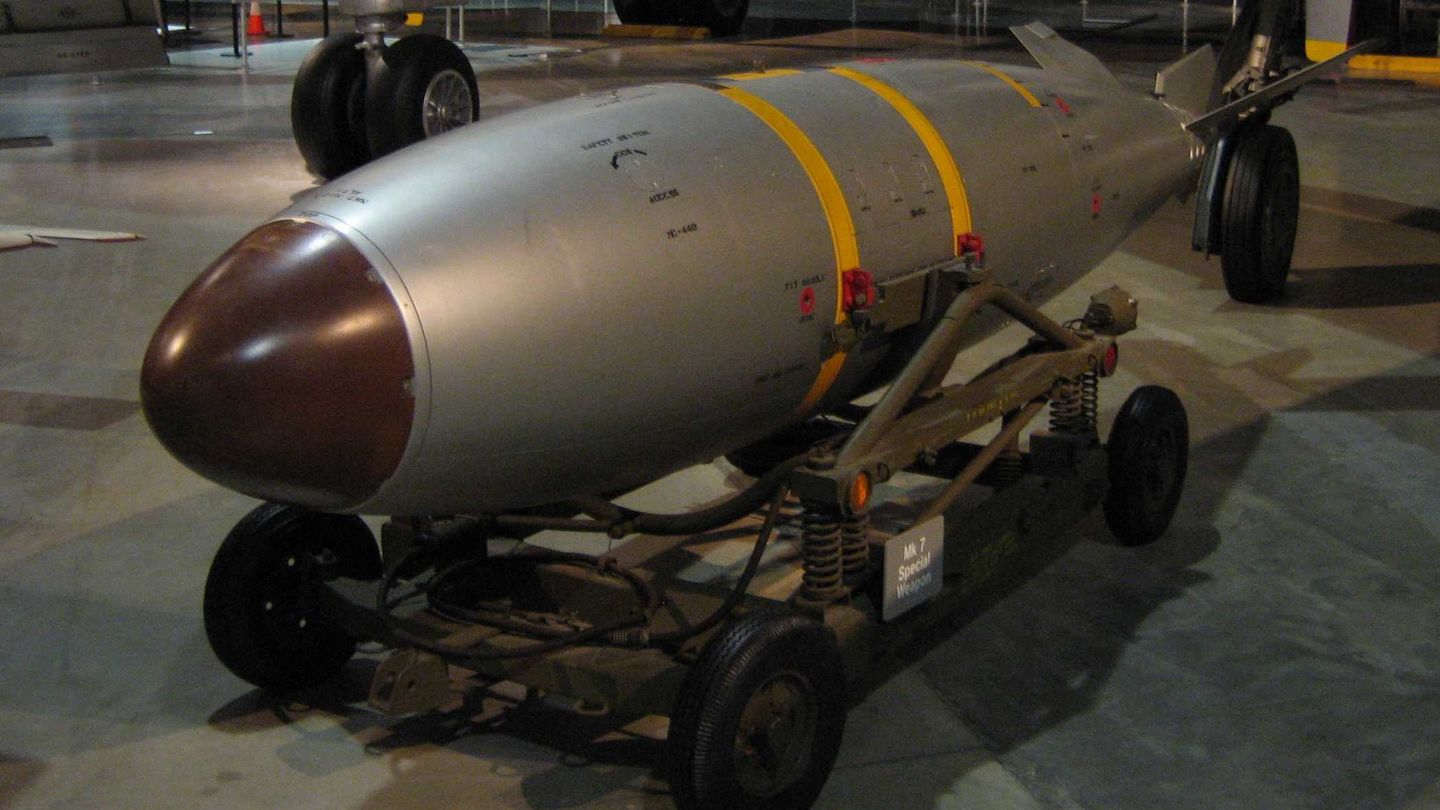
paper
Miroslav Tůma in his new Policy Paper titled "The Importance of Verification and Transparency in the Nuclear-Arms Control, Nonproliferation and Disarmament Process" explained how monitoring and verification procedure associated with the nuclear-arms control, nonproliferation and disarmament process is nowadays important, especially in the sphere between US and Russia, which posses 90% of nuclear weapons all over the world. The author also analysed the development of the verification procedure in this field and its future curse.
Since the Cold War period the importance of the importance of verifying the treaty obligations, which is one of the main parts of the strengthening of the common trust, has been continuing until the present.
At the same time, in the areas of arms-control and international security, the role of nuclear transparency, with the verification of provided data and treaty obligations as its integral part, has been increasing.
The necessity of maintaining predictability, mainly between both of the nuclear superpowers (the US and the RF), which possess about 90% of all nuclear weapons in the world, is connected with the need to maintain the arms-control process and an effective verification procedure in cases of other negotiated treaty instruments being concluded.
Nuclear disarmament verification procedures should above all take into consideration political and technical challenges connected with the current decreasing numbers of nuclear weapons while taking into account the protection of sensitive data as well.
At all relevant security forums, especially at the 10th NPT Review Conference in 2020, the Czech Republic should support the EU initiatives and all other initiatives in favour of maintaining the US-Russia arms-control architecture, especially the proposed extension of the New START Treaty’s validity and verification mechanism in 2021. The possible participation of Czech experts in various verification initiatives would be highly welcomed as well.
FOREWORD
The document summarizes the main aspects of the development of the verification procedures and their differences in the nuclear arms-control, nonproliferation and the disarmament process, outlining possible further course of development in this sphere. A fundamental step towards effective verification is ensuring the verificationsʼ transparency, which should increase and strengthen their interconnectedness. Among the main goals of the verification system are to enable participating sides to receive evidence of potential breaches of accepted obligations, to deter the parties to the treaty from not complying with it, and to help strengthen the common trust.
A fundamental part of the verification regime is the treatyʼs language describing limits and precise wording, which describe the limits and obligations of the parties, including the identification of forces and activities that comply with the terms of the treaty. Monitoring is another significant component of the treaty. It involves collecting data on the forces and activities of another country using so-called National Technical Means (NTM), e.g. reconnaissance satellites, radar installations, etc., for verification. Monitoring can also include on-site inspections on the territory of another state. The following analytical process serves to screen the collected data to enable one to conclude whether the other participant is in compliance with or in violation of the treaty in the evaluation phase. In case of possible violation, a decision will be made on how to react on it.
THE AMERICAN-RUSSIAN (AMERICANSOVIET) ARMS-CONTROL TREATIES
During the Cold War period, namely in the 1950s, the United States and the then Soviet Union began to include verification provisions in multilateral armscontrol agreements. Some agreements signed in the 50s and 60s (e.g. the Antarctic Treaty and the Outer Space Treaty) called for some level of common cooperations in monitoring compliance, but the participating states predominantly relied on NTM for verification.
The American-Soviet nuclear arms-control agreements of the 70s, e.g. the agreements signed in the framework of the Strategic Arms Limitation Talks (SALT), still used the verification procedure that have been used before then, but they started to also include some cooperative measures that complemented NTM for gaining needed information. The participating states also agreed that they would not interfere with the other countryʼs NTM when monitoring systems limited by the treaties. Multilateral arms-control agreements signed at the end of the 80s and in the early 90s, e.g. in the framework of the Stockholm Conference on Confidence and Security-Building Measures in Europe in 1986, continued to rely on NTM monitoring. However, they increased the use of cooperative measures to confirm and deliver additional information collected by NTM.
The INF Treaty
The US-Soviet Treaty on the Elimination of Intermediate-Range and Shorter-Range Missiles (the INF Treaty) of 1987 prohibited ground-launched ballistic missiles and cruise missiles (500–5,500 kms) with nuclear or conventional warheads. The Treaty prohibited the manufacture, possession and conducting of flight tests of the mentioned missiles (means of delivery of warheads) and launchers with the exception of doing so in the context of research and development. By the end of May, 1991, the parties fulfilled the Treatyʼs limitings obligations. The disposal of weapons stipulated by the Treaty did not apply to control systems and the mentioned warheads. The Treatyʼs demise in August 2019 was caused by the USʼs withdrawal from the Treaty after it accused Russia of violating the Treaty. The RF also accused the US of not respecting the Treatyʼs obligations and withdrew from the Treaty too.
The INF Treaty was the first agreement to comprise various unprecedented cooperative measures to be applied on the territories of both states that are parties to it. For example, it involved displaying the mentioned groundlaunched ballistic missiles on mobile launchers to deter efforts to deploy ballistic missiles banned by the Treaty at bases housing non-limited ballistic missiles. Also, in each country a continuous monitoring presence outside one INF missile assembly facility was established. The countries agreed to exchange detailed data on systems limited by the Treaty and to notify the other country when they planned to move or destroy these systems. In accordance with the Protocol on Inspections, on-site inspections were carried out at selected missile assembly facilities and all storage facilities, deployment zones, and repair, test and elimination facilities over a period of thirteen years. The inspections stopped in 2001 and afterwards the verification was limited to NTM. In the period before they ended, the US carried out 540 inspections at 133 places in the USSR/RF, and the other side carried out 311 inspections at 31 controlled places. The Special Verification Commission, as a forum for discussing and resolving implementation and compliance issues, facilitated the verification of dismantlement. The Commission dealt also with additional procedures to improve the viability and effectiveness of the Treaty and with the characteristics and methods of use of inspection equipment as well.
The START I and SORT Treaties
The American-Soviet negotiating process START, dealing with the reduction of nuclear strategic offensive arms, started at the beginning of the 80ʼs and in its framework the START I Treaty was signed in 1991. The Treaty limited the numbers of operationally deployed strategic nuclear weapons and its verification system was a continuation of procedures of the previous treaties, mainly the INF Treaty. It covered a wide exchange of data on the numbers and locations of relevant weapons systems, various types of on-site and other regular inspections, monitoring of the production facilities for ICBMs and the associated mobile launchers, etc.
Due to the dissolution of the Soviet Union on December 25, 1991, followed by the creation of the Commonwealth of Independent States (CIS), not only the Russian Federation (the RF) in the role of a successor state, but also Ukraine, Belarus and Kazakhstan joined START I due to the deployment of strategic weapons on their territories. After that, there were negotiations on the planned START II and START III between the US and the RF but for various reasons the negotiating process did not lead to a finalization of these treaties.
With the formation of Bushʼs Republican administration in January 2001 the START treatiesʼ negotiation process was stopped. Nevertheless the negotiations of a reduction of strategic offensive weapons continued, and they included the US intention to withdraw from the Anti-Ballistic Missile Treaty (the ABM Treaty). The friendly and partner-like American-Russian relations in that period of time culminated in 2002 with the signature of the so-called Moscow Treaty (SORT) on further reduction of strategic nuclear warheads and the Common Declaration on the new framework of strategic relations. The three-page agreement, titled The Treaty between The United States of America and the Union of Soviet Socialist Republics on Strategic Offensive Reductions (SORT) of 2002, was extremely short in comparison with the previous broad arms-control agreements negotiated in the START framework. Above all the text was also without a fixed verification procedure. According to official statements of both sides the Treatyʼs form reflected the change in their mutual relations. However, due to the absence of verification provisions in this treaty, the validity of the START I Treaty with its verification regime was extended until the end of 2009 and it was used in the SORTʼs implementation.
The New START Treaty
The Treaty between the United States of America and the Russian Federation on Measures for the Further Reduction and Limitation of Strategic Offensive Arms (New START) of 2010 is the last valid bilateral arms-control instrument after the INF Treatyʼs demise. In a period of seven years it reduced the limits for the numbers of nuclear warheads on deployed strategic land, navy and air carriers, and also the limits for the numbers of these carriers and their deployed and nondeployed launchers. After the Treaty expires in 2021 after being valid for ten years, it may receive a five-year extension in accordance with its own provisions. The importance of the Treaty lies in the predictability it makes possible; it maintains and strengthens the legal and institutional framework of the strategic arms-control process leading towards a transparent and irreversible reduction of nuclear weapons.
In support of the Treatyʼs implementation, which was finished on time, both participating states were exchanging reports with detailed information on limited systems every two years. Besides this, the Treaty stipulates that both sides must send out notifications of any changes in already sent data and all significant activities pertaining to strategic weapons, such as transfers of missiles and heavy bombers, significant exercises, etc. These notifications were dealt with by the Nuclear Risk Reduction Centers, which were established in 1988 for facilitating time-sensitive communication between the US and the then Soviet Union. For the first time in the history of the nuclear arms-control process, all missiles and aircrafts, similarly as well as all launchers had their own unique identification notifier (tag) for the use in tracking their movements. The New START Treaty restricted the NTMʼs interference in verification systems of the other side, such as, e.g. satellite reconnaissance, and it enabled on-site inspections as well. Each side could carry out up to 18 inspection visits a year, 10 of them on an operational basis for verification of data dealing with numbers of deployed carriers and nuclear warheads installed on missiles or the numbers of nuclear weapons on heavy bombers. Eight inspections could be used to gain access to other declared facilities i.e. storage and training facilities and others. The Bilateral Consultative Commission helped to solve various disputes regarding the Treaty and held meetings twice a year in Geneva.
NUCLEAR TEST-BAN TREATIES
The ban on nuclear weapons testing is among the global security measures creating the basis for a world without nuclear weapons. Nuclear tests, the number of which in various environments, reached almost 2,000 during the Cold War period, enables non-nuclear weapon states to successfully complete their nuclear arms programs, and nuclear-weapon states to increase the quality of their nuclear weapons. However, the tests devastate nature and the living environment, and in many cases they resulted in a loss of lives and a threat for the health conditions of the people living in areas afflicted by the nuclear fallout. The success of the verification of the relevant treaties depended on the level of the technological development of the monitoring instruments.
The PTBT
The multilateral Partial Test-Ban Treaty (PTBT) of 1963, though it was originally only between the US, the USSR and Great Britain, prohibits nuclear tests in the atmosphere, outerspace and underwater. However, it enables underground tests because at the time of its negotiation the monitoring technology was not advanced enough to differentiate them from an earthquake, for example. The verification of the PTBT was carried out through NTM. It was mainly the so called the Cuban Missile Crisis of 1962 with its imminent threat of an all-out nuclear war and public concerns about the growth of tests of thermonuclear bombs with a high yield and the negative consequences of their nuclear fallout that influenced the relatively fast start of the Treaty negotiation. The test-ban contributed to, among other things, the negotiation of the Nuclear Nonproliferation Treaty (NPT) and the significant limitation of the concentration of radioactive particles in the atmosphere.
The TTBT
The American-Soviet Threshold Test-Ban-Treaty (TTBT) of 1974 prohibited underground nuclear tests of a yield up to 150 kt of TNT, i. e. ten times the power of the atomic bomb dropped by the US on Hiroshima in August 1945. The verification protocol of the Treaty included the use of NTM and a mutual exchange of data, including seismological monitoring, the use of the hydrodynamic explosive measurement method, geographical data and on-site inspections.
The CTBT
The international Comprehensive Nuclear-Test-Ban Treaty (CTBT) of 1996 so far has not entered into force due to the absence of the signatures and/or ratifications of eight states (the US, the PRC, India, Pakistan, Israel, the DPRK, Egypt and Iran). The Preparation Commission for the Comprehensive NuclearTest-Ban Treaty Organization was established in Vienna in 1996 with the goal to achieve the Treatyʼs entry into force and the creation of the International Monitoring System (IMS). When finished, the IMS will be composed of 321 monitoring stations (seismological, hydroacoustic and infrasound) based in 89 countries, and 16 radionuclide laboratories. The system is presently already functional and it can be used even for civilian purposes, e.g. for predicting of earthquakes and tsuami waves. The received data are sent into the International Data Centrum (IDC) located in Vienna, from which they are distributed to all signatory states. The verification measures will be strengthened by on-site inspections after the Treatyʼs entry into force. The CTBT existence contributed to the present situation in which no nuclear-weapon state has an active testing program. These states declare a unilateral moratorium on nuclear testing every year. North Korea has frozen its own nuclear and long-range missile testing in 2018 due to negotiations with the US on the denuclearization of the Korean peninsula.
MULTILATERAL NONPROLIFERATION AND DISARMAMENT TREATIES
The NPT of 1968 strengthened the global nonproliferation regime in a substantial way and contributed to the process of creating non-nuclearweapon zones and the start of the CTBT negotiating process. The increasing effectiveness of the IAEA safeguards system in the NPT Treaty framework has, besides its nonproliferation role, a direct influence on the fight against so-called nonconventional terrorism because it reduces terroristsʼ chances of gaining nuclear weapons and radioactive material. When the Treaty Prohibiting Nuclear Weapons (TPNW) of 2017 enters into force the importance of verification of the nuclear arms-disarmament process and trust-building measures will increase.
The NPT
The NPT, which entered into force in 1970, is not a disarmament treaty. It deals mainly with nonproliferation of nuclear weapons and the peaceful use of nuclear energy as well. Its third pillar, pertaining to disarmament, is derived from the preamble and the vague Article No VI. The Treaty divides the member states into the majority of non-nuclear-weapon states, which are obliged not to develop and not to possess nuclear weapons, and the five so-called declared nuclear-weapon states, i.e. the permanent members of the UN Security Council (the US, France, the PRC, the United Kingdom and the RF) with the right to possess the mentioned weapons. The NPT assigns to the International Atomic Energy Agency (IAEA) a special role, as it is to oversee whether the state party to the Treaty utilize and abide by the safeguards for the peaceful use of nuclear energy.
The IAEA, as an autonomous international organization within the United Nations, was founded in 1957. Its verification role is based on the Comprehensive Safeguards Agreements signed by all NPT Treaty non-nuclear-weapon states. The IAEA is to ensure that safeguards are applied to all nuclear material for the exclusive purpose of verifying that such material is not diverted to the building of nuclear weapons or other nuclear explosive devices. The five declared nuclearweapon states, so-called P5, have concluded Voluntary Offer Agreements for the application of safeguards to nuclear material in selected facilities. According to the IAEA regulations, the safeguards are based on assessments of the correctness and completeness of a stateʼs declared nuclear material and the relevent activities. The verification measures include various kinds of on-site inspections, visits related to safeguards, ongoing monitoring and evaluation. Based on the different types of safeguards agreements, there are two sets of vertification measures. The first set relates to verifying state reports of declared nuclear material based on nuclear material records, and also through the use of containment and surveillance techniques, e.g. tamper-proof seals and cameras, which complement the records in this regard. The second set strengthens the inspection capabilities that are incorporated in the Additional Protocol and serves to verify not only declared but also undeclared nuclear material and relevant activities. The Additional Protocol enables the IAEAʼs inspectors, to gain a relatively complete picture of the given stateʼs nuclear activities, as it shows consideration for the rigorousness of the inspection activities.
The TPNW
The TPNW Treaty of 2017 is unambiguously a disarmament treaty. It prohibits, among other things, the development, testing, production and manufacture of nuclear weapons, and their use and threats of their use, including the stationing of these weapons in the territories of the non-nuclear-weapon states. All nine of the nuclear-weapon states, and their allies and partner countries are still refusing the Treaty, while about 130 non-nuclear-weapon states of the United Nations are supporters of it. Verification is dealt with only very briefly in the Treaty, namely in its Article No 4. However, the Article gives a significant role in this respect to the IAEA and its safeguards system and also to an unspecified competent international authority. After the Treatyʼs entry into force and possibly, after some of the nuclear-weapon states join it, the significance of the implementation of verification will increase and a document dealing exclusively with verification could probably be added to the Treaty.
THE MAIN VERIFICATION INITIATIVES
Various multilateral or individual initiatives reflecting technical and political challenges connected with nuclear disarmament verification process are helping to achieve the long-term goal of a world without nuclear weapons. In their activities, they build on various past and still continuing experiences with verification in the nuclear arms-control, nonproliferation and disarmament efforts. While until only recently the verification of dismantlement of nuclear weapons exclusively focused on the nuclear means of delivery, now we are witnessing increasing numbers of nuclear arms-disarmament initiatives that deal with the sensitive issue of verification of the dismantlement of nuclear warheads. Examples of these include the US and the United Kingdom verification cooperation of 2000; the originally bilateral United Kingdom-Norway Initiative of 2007, which was later joined by Sweden and the US in 2015 under the title The Quad Nuclear Verification Partnership, and also The International Partnership for Nuclear Disarmament Verification (IPNDV) of 2014. The Group of Governmental Experts, whose task is to think about the role of verification in advancing nuclear disarmament, was created in the UN framework in 2016. There are even analytical experts and institutions – e.g. the United Nations Institute for Disarmament Research (UNIDIR) – which propose new solutions in the problem of verification.
CONCLUSIONS AND RECOMMENDATIONS
→ The fact that the US and Russia both accuse each other of the not fulfilling the obligations of the now defunct INF Treaty confirms the necessity to steadily improve the verification system of the future
arms-control treaties and accept complementary confidence-building measures.
→ In spite of the fact, that the current unfavourable development in the US-RF relations doesnʼt signal that there will be a positive change in the common arms-control process in the near future, it is still highly
desirable to continue in the development of the verification methods, procedures, and the relevant techniques.
→ The learned verification lessons and recommendations of various initiatives – e.g. those published in the May 2019 report of the Group of Governmental Experts, which deals with the issue of verification in the advanced nuclear disarmament process, confirm, among other things, the significance of verification in all stages of the nuclear disarmament process.
→ Each engagement in verification activity, including those of nonnuclear-weapon states, should be strictly in line with the applicable international legal non-proliferation obligations as well as other legal requirements.
Miroslav Tůma is Senior Associate at the Institute of International Relations Prague



